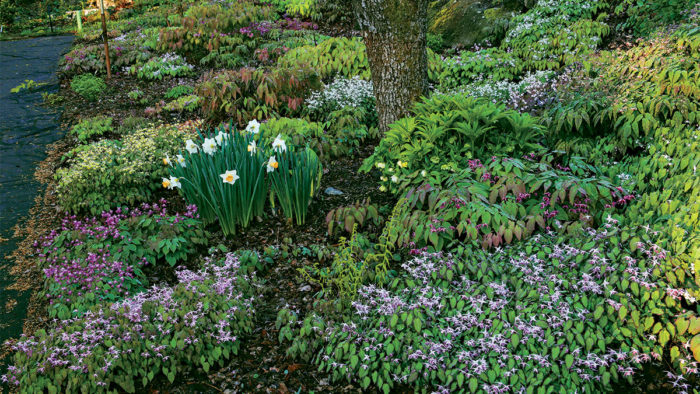
Epimediums have the power to bring me to my knees in early spring. I will gladly muddy my jeans for a glimpse of their slender stems rising through the leaf litter. I am not the first to be captivated by these charismatic plants. They have been cultivated in Asia for centuries, primarily for medicinal purposes, but many old Japanese varieties were, and still are, grown for their sheer beauty.
At a GlanceName: Epimedium spp. and cvs. USDA Hardiness Zones: 4–9 Conditions: Partial to full shade; average to dry, well-drained soil; ideally neutral, moisture retentive soil high in organic matter Native range: China, Japan, Korea, parts of the Mediterranean and North Africa |
In the wild, epimediums (Epimedium spp. and cvs.) are found in habitats ranging from mostly sunny to deeply shaded, and in soils that range from moist to dry. The lion’s share are found on wooded hillsides, sometimes under shrubs, or in the cracks and crevices of rocky slopes. In recent decades, plant explorers have discovered and named many new species, and have selected and hybridized hundreds of new cultivars.
Amid this dizzying array of choices, there are a few widely available cultivars that are valued as ground covers for dry shade. Once established, these beauties endure dry spells while their neighbors wilt, with robust woody root systems that keep weeds and invaders at bay.
But epimediums have the potential to be so much more than just bulletproof ground covers. Afforded the luxury of good garden conditions, they can flourish as specimens, adding distinctive colors, textures, and forms to the garden tapestry. With so many wonderful cultivars to choose from, it’s hard to pick just a few to highlight. But those on the following pages will give you a sense of the wonderful variety available if (when) you catch the collecting bug.
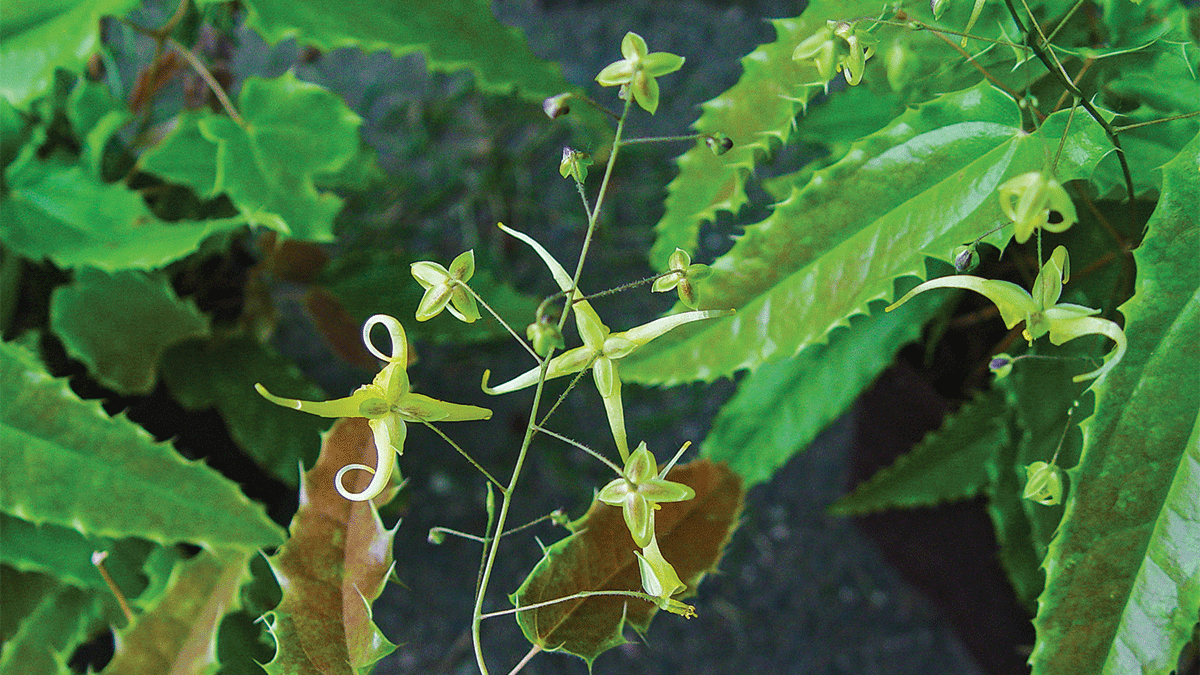
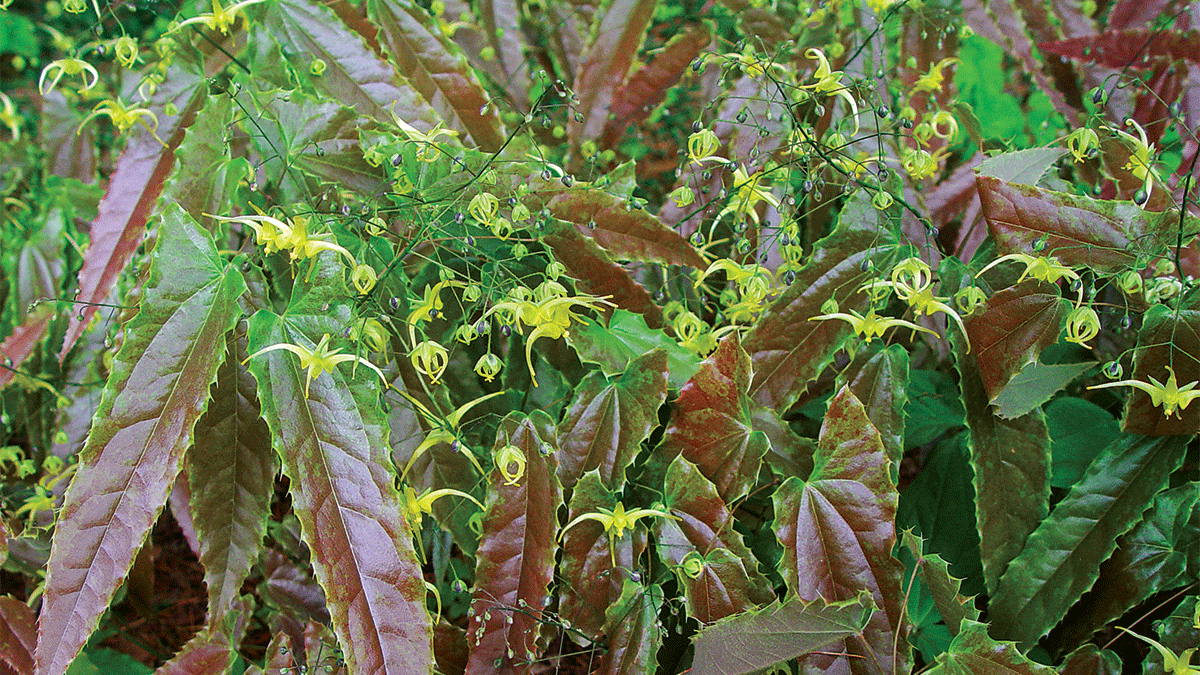
Spiky foliage and stellar blooms
Name: Epimedium ‘Ninja Stars’
Zones: 5–9
Size: 12 to 15 inches tall
The killer foliage of ‘Ninja Stars’ grabs attention all season, emerging mahogany and later deepening to glossy green. The leaflets are shaped like elongated blades, with daring spiny edges highlighted in a paler color. Its flowers hover on impossibly slender stems, with clear yellow petals and pale, spinelike spurs. A second spurt of leaves brings the mahogany hues back, extending the colorful show. When grown in good conditions, its rhizomes extend a satisfying 4 to 6 inches per year. Like many Chinese selections, this one takes a stab at being evergreen. It is a relatively new cultivar, introduced by epimedium guru Darrell Probst in 2016.
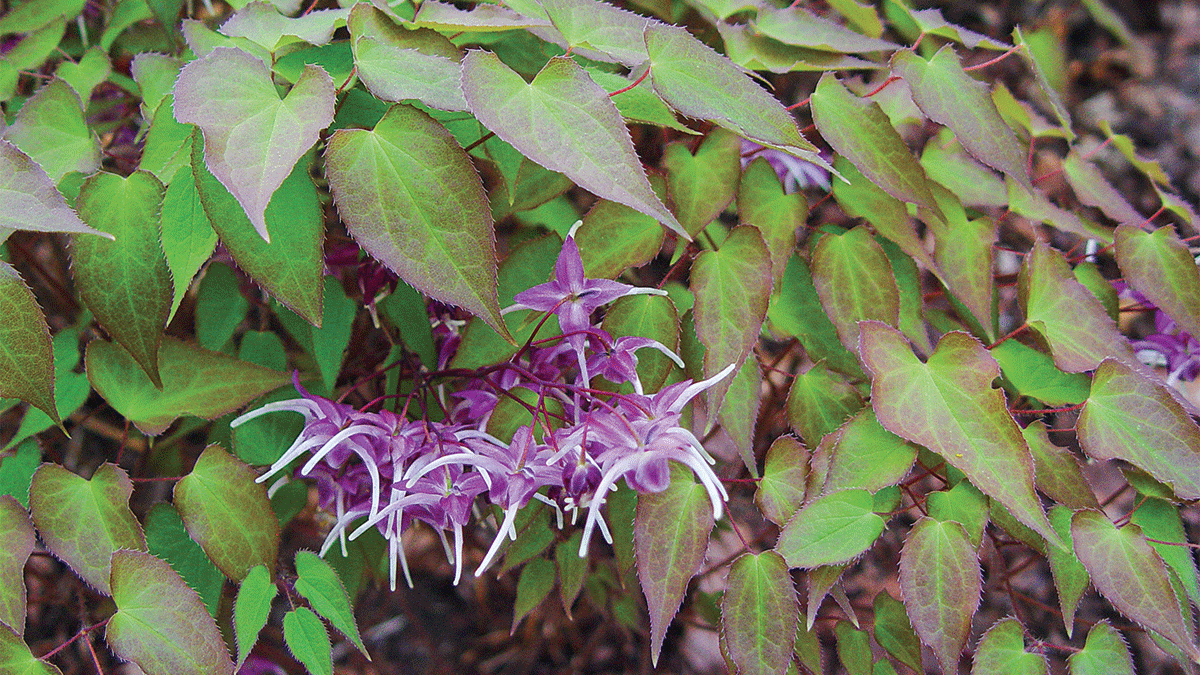
Vigorous, cascading habit
Name: E. grandiflorum ‘Waterfall’
Zones: 4–8
Size: 12 to 20 inches tall and up to 30 inches wide
’Waterfall’ is a robust plant with great presence throughout the growing season. It forms a beautiful mass of leaves that reach 20 inches tall in summer. As leaves emerge they are tinged in bronze, with a glow of light green highlighting the veins and the spot where each leaflet attaches to its petiole. The elegantly tapered leaflets are arranged in layers, flowing one over the other like a waterfall of foliage. If the foliage creates the waterfall, then the flowers create the froth that gathers along edges and eddies, breaking the surface and adding visual contrast. This froth of flowers is held on upright and slightly arching stems that extend out from the foliage mass. The large flowers are rosy colored with showy elongated spurs that fade from lavender to white.
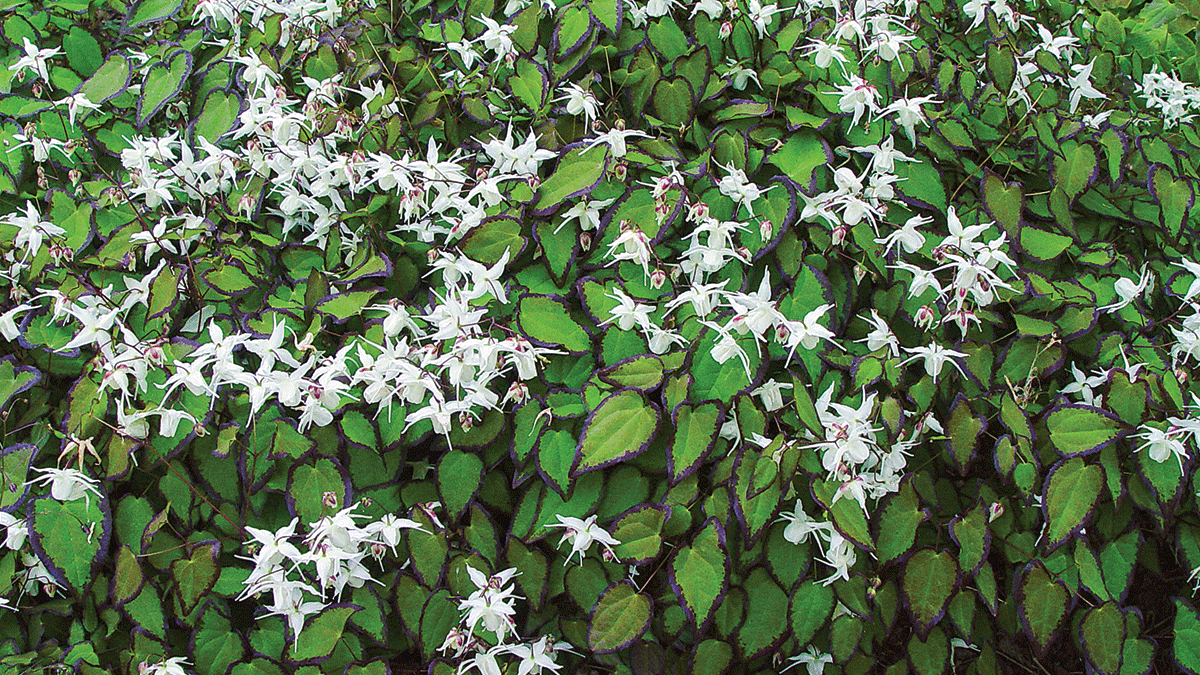
A diminutive beauty
Name: E. ‘After Midnight’
Zones: 5–9
Size: 6 to 8 inches tall and wide
Starting out with a burst of chocolate, the leaflets of ‘After Midnight’ soon become green at the center, crisply trimmed in bronze. These make a stunning backdrop for the flowers, which, though only 6 to 8 inches tall, draw you in from across the garden. You’ll know your obsession with epimediums is full blown when you find yourself nose to nose with these blooms, marveling at how the cherry-rimmed outer sepals closely align with the color of the flowering stalks. The sepals will soon fall away, leaving a flurry of sparkling white flowers that contrast cleverly with the dark leaflet edges. This is a lovely plant to place in a pocket of rich soil in the crevice of a boulder, or along a shaded walk where you can appreciate its small stature and beautiful details.
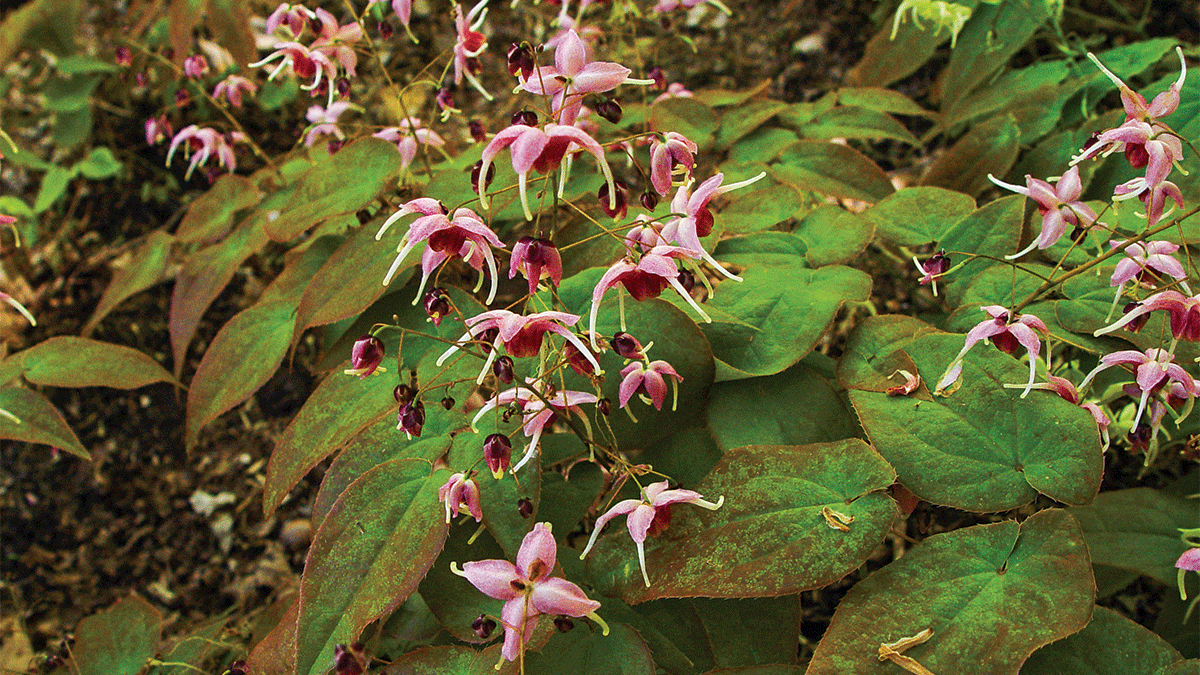
Plenty of rosy color
Name: E. ‘Pretty in Pink’
Zones: 4–8
Size: 10 to 12 inches tall and 12 to 18 inches wide
‘Pretty in Pink’ is as charming as the name implies. Demure bicolored flowers dangle like jewels over muted coppery foliage, which is softly mottled with flecks of burgundy. Its outer sepals are a soft, clean pink, the inner petals are a deeper raspberry, and its long, thin, pendant spurs fade to white at the tips. Introduced by Plant Delights Nursery in 2012, it is a strong grower with E. grandiflorum heritage. When the flowers fade, a second flush of foliage with pink hues prances above the rest. Eventually even this showy flush settles into a glossy green for the summer and holds up into early winter.
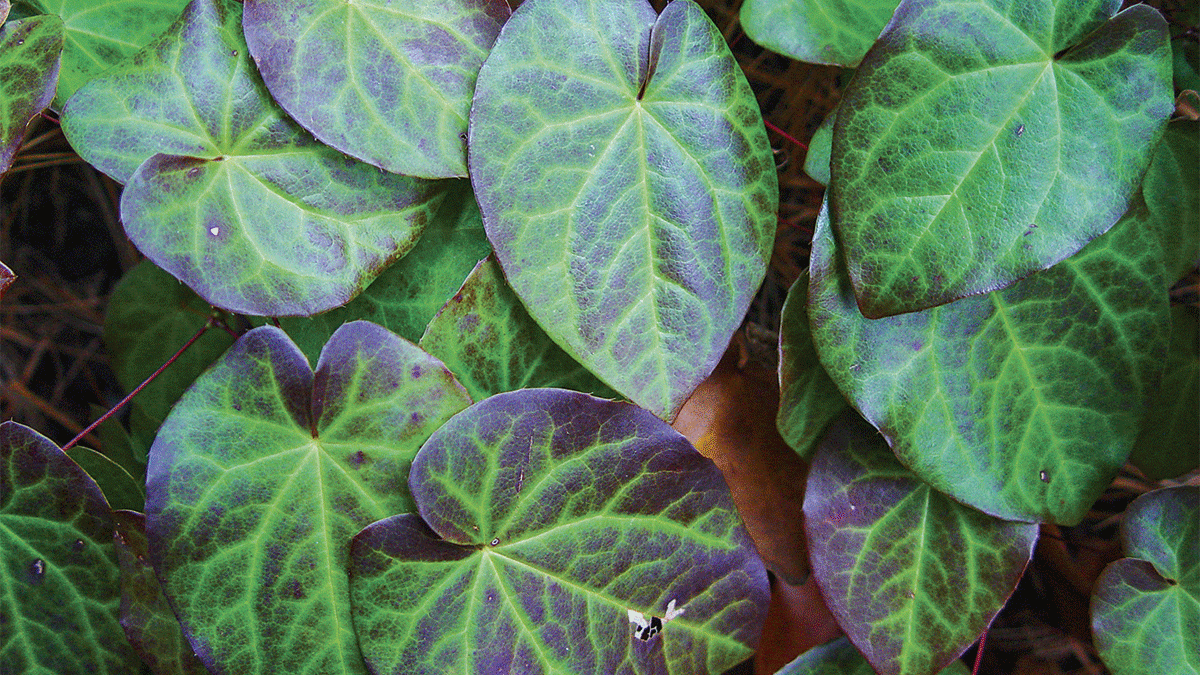
Lightning-patterned leaves
Name: E. pinnatum ssp. colchicum ‘Thunderbolt’
Zones: 5–8
Size: 10 inches tall and up to 36 inches wide
‘Thunderbolt’ is hard to beat for the durable, glossy, rounded foliage that goes over to an exciting chocolate-red when the cold weather sets in. This gorgeous color deepens in sun and holds up remarkably well into the winter months, giving it evergreen status even in southern New England. Each leaflet is crazed with bright green veins in a lightning-like pattern— hence the ‘Thunderbolt’ name. This selection lives up to the reputation of epimediums as great ground covers by advancing 6 to 8 inches a year. Clear yellow sepals surround smaller petals and short spurs that are tipped in burgundy, giving the center of the flower a little burst of color.
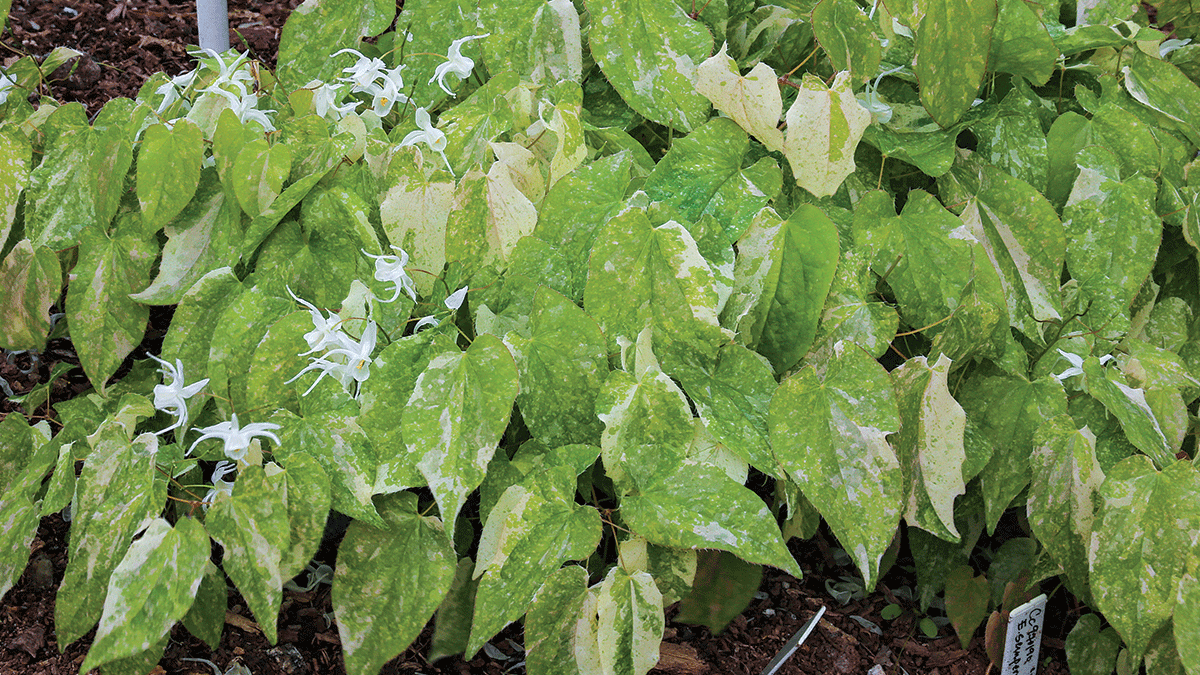
Long-lasting variegation
Name: E. sempervirens ‘Variegated #1’
Zones: 5–9
Size: 8 inches tall and 12 inches wide
It is worth seeking out ‘Variegated #1’ for the artsy blend of white, cream, pink, and salmon that dapple its emerging leaflets in spring. This colorful display coordinates well with the white flowers that arrive in midspring. Eventually the leaves settle into a lovely white-and-green combination that endures well into summer, and since this is a semi-evergreen type, its foliage will remain in good shape into early winter. Legend has it that Darrell Probst paid his highest price ever to secure this clone on a 1997 collecting trip.

Delicate looks, hardy constitution
Name: E. brevicornu
Zones: 4–8
Size: 1 to 2 feet tall and wide
Epimedium brevicornu sends delicate black wands adrift above speckled foliage that reaches 8 to 10 inches tall. The stems seem to have a tenuous hold on the fluttering white flowers, with each stem bearing as many as 25 to 50 flowers. White spurs are swept back, revealing a yellow center and yellow pollen-producing stamens. The overall effect is one of great charm and delicacy—even the leaves seem delicate and papery thin. This species is from northern China, which lends it a dose of hardiness; it can survive to at least Zone 4.
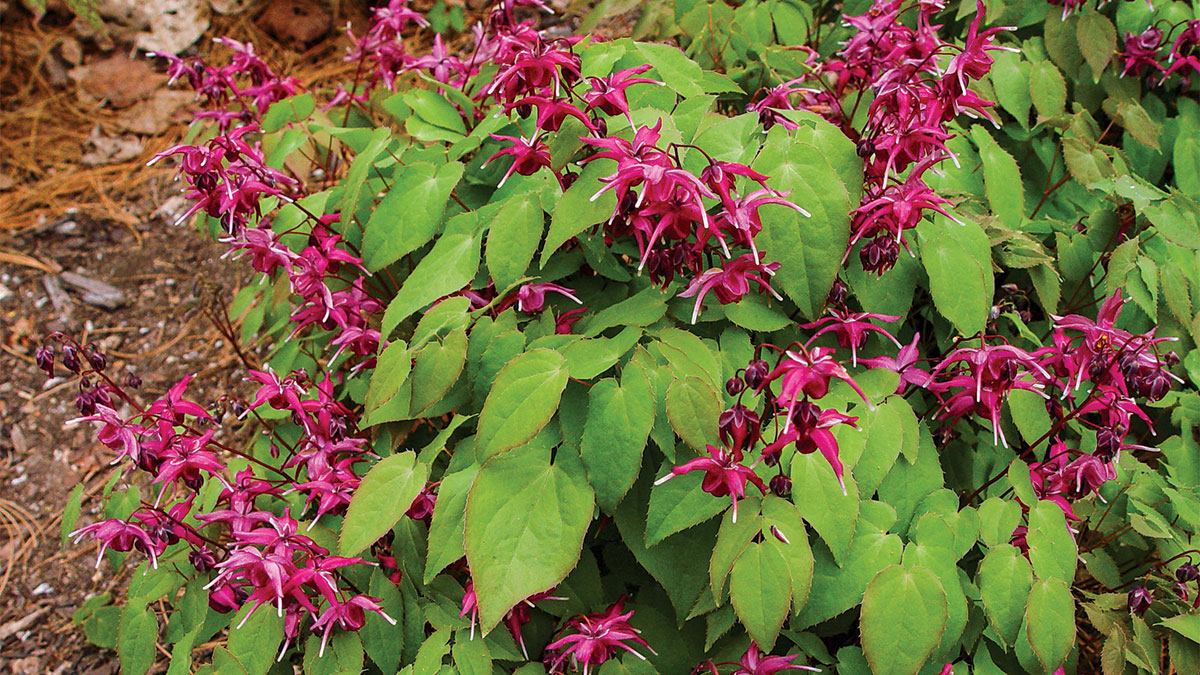
Spellbinding floral display
Name: E. grandiflorum ‘Circe’
Zones: 4–8
Size: 12 inches tall and 18 inches wide
Ever the enchantress, ’Circe’ weaves her spell with large and abundant deep pink flowers, with spurs beautifully tipped in white, that are held above coppery-tinged leaflets in late April and early May. Leaflets are edged in delicate spines and form a tidy mass about a foot tall. The leaves switch to olive green in summer and do not persist through winter. As with all epimediums, the lowest flowers in the raceme open first, with newer flowers opening as the stalk matures. In the case of ‘Circe’, the outer sepals, which drop away as the flower opens, are deep purple-black and are borne on reddish-bronze pedicels—a treat to behold in April and May, when every detail brings you to your knees.
See what epimediums need to stay happy and healthy.
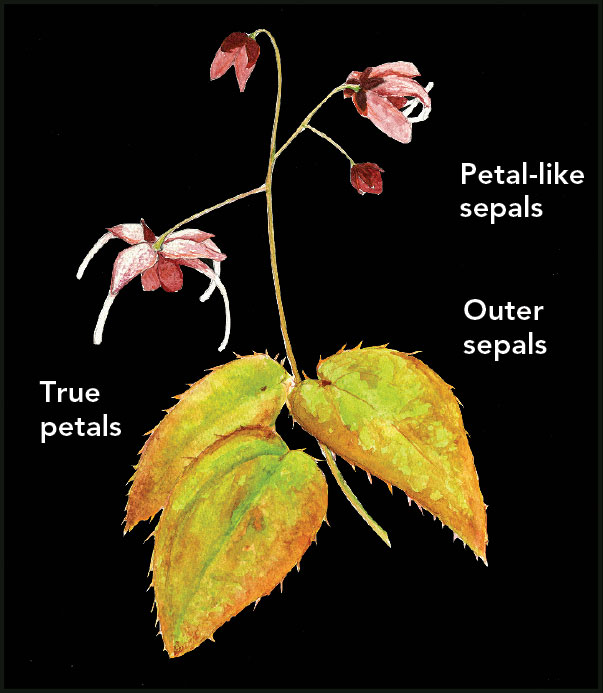
A Closer Look
Anatomy of an epimedium flower
Look closely at an epimedium flower and you will notice that its floral parts occur in fours: four outer sepals that are often quite small and that drop away when the flowers open; four larger, petal-like sepals; and four true petals held at the center that often contrast in color with the sepals. These true petals bear nectar producing spurs that are small in some species and cultivars, and bolder and showier in others. Individual flowers range from a quarter-inch across to 2 inches from tip to tip.
Joann Vieira is the director of horticulture at The Trustees of Reservations, a nonprofit conservation organization based in Boston.
SOURCES
• Edelweiss Perennials, Canby, OR; 503-263-4680; edelweissperennials.com
• Garden Vision Epimediums, Phillipston, MA; 978-249-3863; epimediums.com
• Sebright Gardens, Salem, OR; 503-463-9615; sebrightgardens.com
From Fine Gardening #193
Fine Gardening Recommended Products

A.M. Leonard Deluxe Soil Knife & Leather Sheath Combo
Fine Gardening receives a commission for items purchased through links on this site, including Amazon Associates and other affiliate advertising programs.

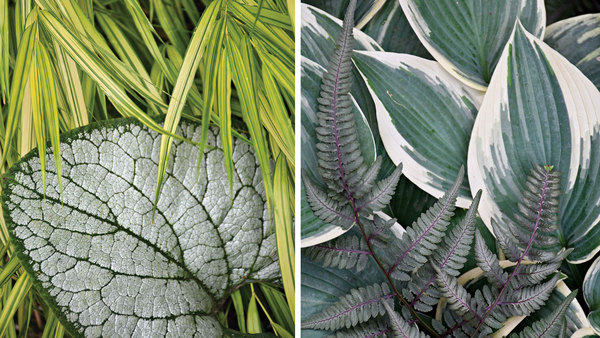
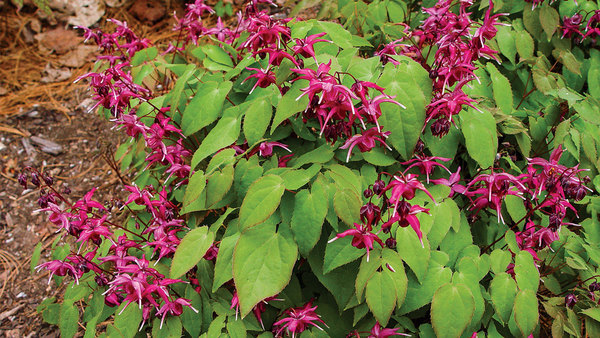
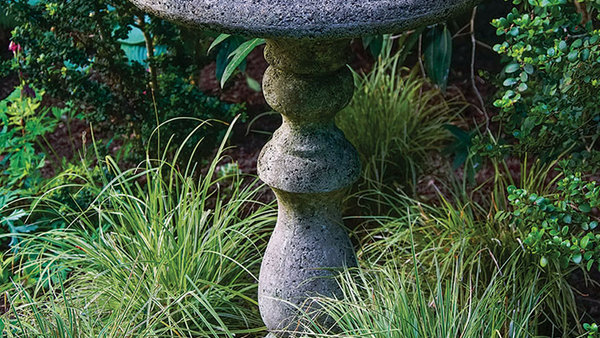
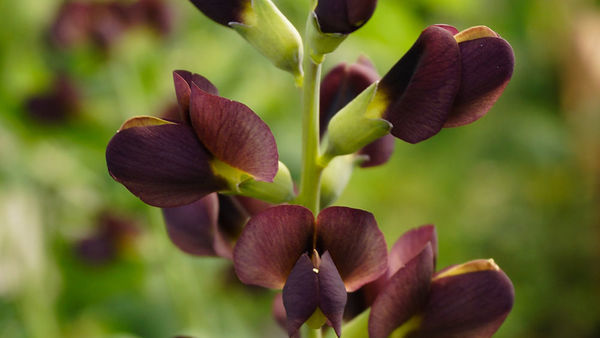













Comments
Log in or create an account to post a comment.
Sign up Log in